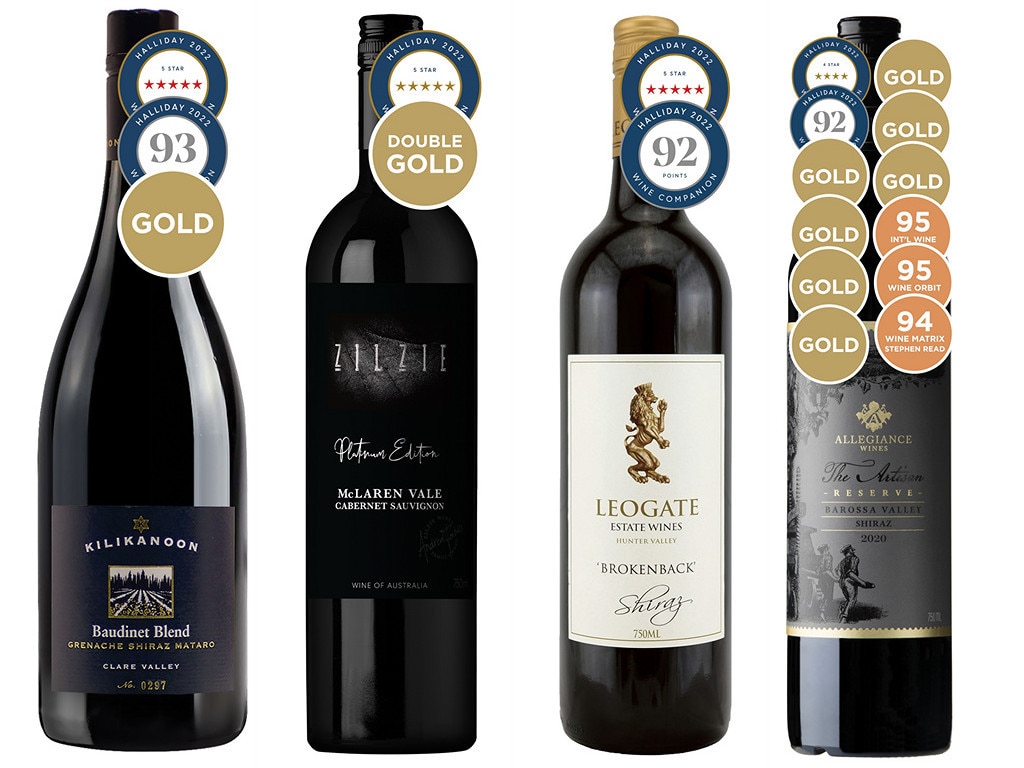Madame Nathalie Vranken says Australians are ‘lovers’ of Champagne and good times
For champagne makers, Australia is now a key market with huge growth potential, says the co-owner of French house Pommery.

Nathalie Vranken, in her perfect English flavoured with a lilting French accent, wants to set the record straight about Australia’s fondness for champagne – or, in her words, “bubbles of happiness”.
“You are lovers, not drinkers,” says the co-owner of champagne house Vranken-Pommery on her tenth visit to Australia.
“Champagne is a beautiful moment for you reward you arrive at a restaurant, you had a tough day, then you are with your friends or family in the restaurant and then you have the pleasure of drinking a glass of champagne,” she says.
Thankfully for Vranken-Pommery – and other champagne producers – there have been plenty more occasions to get together for the bubbles of happiness since pandemic restrictions ended.
“I think you see it exactly in Australia like the rest of the world see it, the happiness is back, parties are back, people are back together and at the end of a terrible moment we have had in the last two years,” Vranken says.
“Champagne is a symbol of those moments of sharing, of those big dinner tables, big family events, and we are all back and all happy to be connected – so champagne is part of that happiness. Bubbles of happiness.”
Australians have returned to restaurant, family dinner tables and champagne flutes with vigour this year. The country is the sixth biggest importer of champagne, consuming around 10 million bottles a year, and jostling closely with the much larger countries of Italy and Germany.
Vranken has a different way of describing the international market for champagne, as she pushes her finger in small but growing concentric circles. “The market of champagne is like a snail shell, you come from France in the centre and the more you go out and away the less you sell and the more you sell it close to the end of the year,” she says.
Australia is getting closer to the centre of the snail shell.
“Champagne demand in Australia is exceptionally high and I think it is important to remember this time of year it is definitely the Champagne season,” says John Noble, director of the Champagne Bureau in Australia.
“Our indicators for the year show really strong growth in the market continued through 2022 and remember that in 2020, the first year of the pandemic, Australia was the only market in the world that showed significant growth,” Noble says.
“Australians don’t wait for celebrations to drink champagne, we drink champagne that makes the celebration and this time of year the weather is better, we are going outside, drinking champagne on the terrace or by the pool, in the backyards at barbecues and it really is an exceptional time for champagne in our market.”
Andrew Shedden, head of fine wine at Endeavour, the owner of Dan Murphy’s and BWS, says non-vintage champagne continues to drive the majority of the sales volume for the market but the company has seen growth in premium brands and across vintage expressions specifically.
Classic champagne houses remain popular, although there is growing interest in smaller producers including Philipponnat, AR Lenoble and Delamotte.
“This tells us people are excited to discover new wines from the region and are willing to try something different. Australians no doubt want to pop the cork on some fine French fizz to celebrate the first restriction-free festivities in years. We are predicting strong sales as we head into Spring Racing and Christmas,” he says.
In her first visit to Australia since the pandemic, Nathalie has visited the key markets of Melbourne, Sydney and the Gold Coast as Pommery launches its new Cuvée Louise 2005 Parcelles, which will sell for around $380.
Vranken, who graduated with a history degree from the Sorbonne and went on to found a marketing and communications agency, is very keen on celebrating the return to normal after the pandemic. But it’s a different type of normal she argues.
“We want to have the more little moments of happiness and I think that is what is in a glass of champagne, bubbles of happiness,” Vranken says.






To join the conversation, please log in. Don't have an account? Register
Join the conversation, you are commenting as Logout